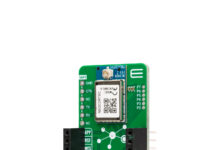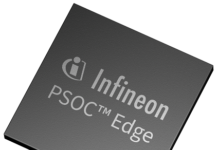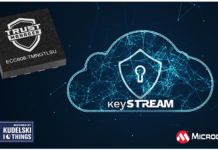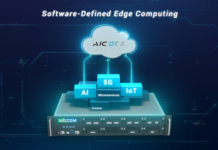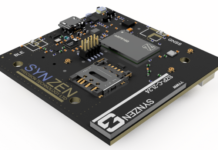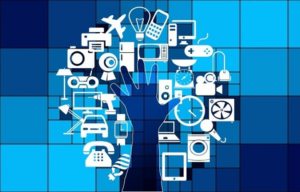
The subject of the Internet of Things (IoT) has an extremely broad range of interpretations. Some immediately think of the “thing” itself as a connected thermostat. Others see it as a means to extend products into services. Most interpretations gravitate toward financial reward through data collection and analysis.
I recently attended IoT World in Santa Clara, California, and was struck by this diversity. Every conversation I witnessed had a five-minute preamble/negotiation just to agree on a common perspective. It’s kind of like the three blind men and the elephant parable, but instead of three men, it’s 1,000 people touching a sculpture made of wet clay.
When Bill Gates famously said, “We always overestimate the change that will occur in the next two years and underestimate the change that will occur in the next ten,” I think he must have been referring to IoT. Even though it has been creeping up on us for years, we are yet to realize its true influence.
Simply put, the impact will be much bigger than smarter toothbrushes. Connecting everything will radically change our world in ways we can barely imagine. It will indeed change the way we live and act. Here are four current (summer 2017) thoughts on IoT.
IoT momentum is building quickly
It was hard to believe IoT World 2017 was the same venue as IoT World 2016. Conference organizers reported that show attendance increased 20x in its 35-month history. It was up nearly 50 percent from last year with over 14,000 pre-registered attendees. The expo hall was also much larger, with 250 exhibitors of all sizes.
More significantly, IoT is attracting huge vendors such as Johnson and Johnson, GE, Tata, and Microsoft, as well as a new generation of startups. The back four rows in the expo hall were dubbed Startup City and featured over 100 new companies.
The IoT lifecycle includes evolution
There’s a fairly reliable progression in IoT solutions that starts with basic sensing, expands to control, and then culminates with the explosion of imagination. What happens is IoT solutions are created to solve a very specific known problem. Consider the journey of replacing 50-year-old power meters. Yesterday’s smart meters simplified meter reading with a wand. The short-range telemetry improved reliability and reduced the time required to read meters.
But real connectivity can do so much more. New smart meters enable micro billing for time-of-day billing, monitor for leaks, and completely eliminate meter reading trips. Those 5-year-old “smart” meters are being replaced with new meters, but how long will these last?
Another example is the connected, cashless vending machine. The creators initially used IoT to remotely monitor inventory. Next, NFC readers were added for mobile payments. Additionally, discounted programs were created to reward regular customers. Finally, geo-awareness was added to the mobile app to help customers find nearby machines or locate a specific snack.
It is hard to imagine the benefits and capabilities of IoT in an unconnected world. As is so often the case, we don’t realize what we are building until our eyes are opened to what is possible. As we start to connect and collect, previously unfathomable opportunities become obvious.
Different tools are needed
In order to collect, analyze, and act appropriately, we need to completely rethink computing architectures and tools. Edge computing creates a new category of devices, such as the Harman gateway, which intelligently aggregates local data. Time series databases, such as Influx, will become critical to manage and organize timestamped data. Every aspect needs updating, including management systems, network designs, and, of course, security systems require constant vigilance.
How much sales information can a sales representative enter into a CRM? It may seem like a lot, but it’s relatively minor compared to millions of sensors continuously collecting a myriad of data. What’s coming is will give a whole new meaning to “big data,” perhaps ginormous data?
The amount of data collection on the horizon is staggering. Many IoT devices collect all kinds of data, such as GPS coordinates, weather, motion, video and usage. There is a clear trend of low-cost sensors becoming more powerful—and thus prevalent.
We regularly hear estimates of 25 billion to 50 billion devices on the internet by some near-term date. Big numbers provide a provocative vision, but the implications represent a radical, necessary change in current approaches and tools.
IoT is hard
IoT seems so easy. Sensors are cheap, and Wi-Fi and Bluetooth are “free.” So, how hard can IoT be? The answer is it’s really hard! There are a lot of moving parts, since so many of the sub-components, such as networks and processors, are changing quickly, but IoT usually adds the additional complexity of scale. The challenge is much bigger than many initially realize.
It’s easy to mount a sensor that can be accessed from a smartphone, but designing a reliable sensor that can be remotely controlled and upgraded is an entirely different matter. Are there safety issues (think of Samsung phones catching fire)? Are there licensing issues (local and global spectrum)? Are there disposal issues? Are parts serviceable? Is it appropriately protected from environmental conditions? Is it secure? Is it cost effective? Those are just some of the questions involved in creating an IoT system.
Final thoughts
We are still in the early stages of what will become a highly connected world. Just as it was hard for me to explain to my kid why we can’t pause live TV, it will be hard to explain to the next generation how we got anything done with such limited visibility.
By: Dave Michels



